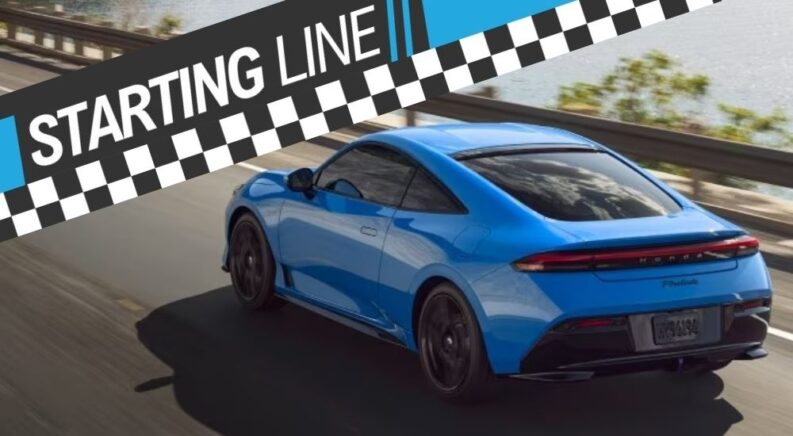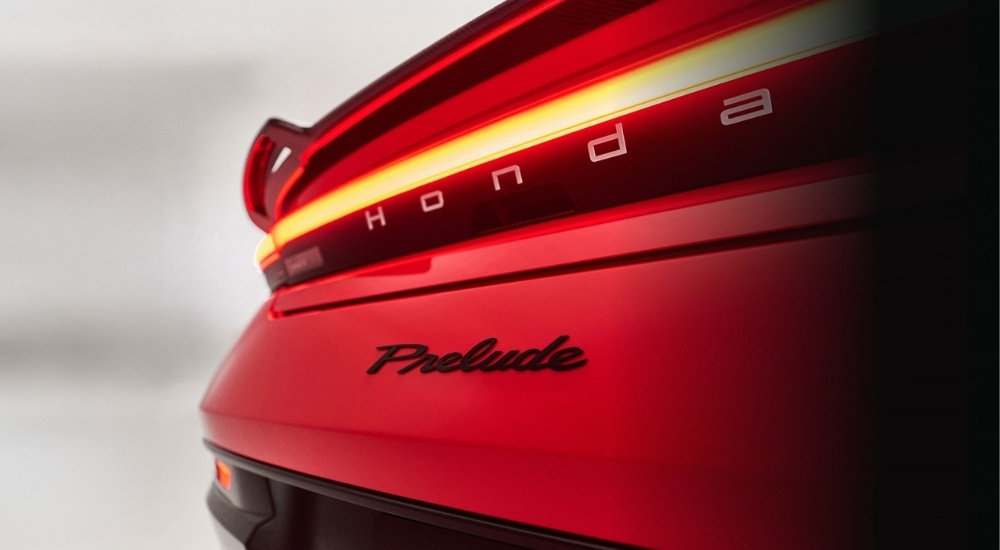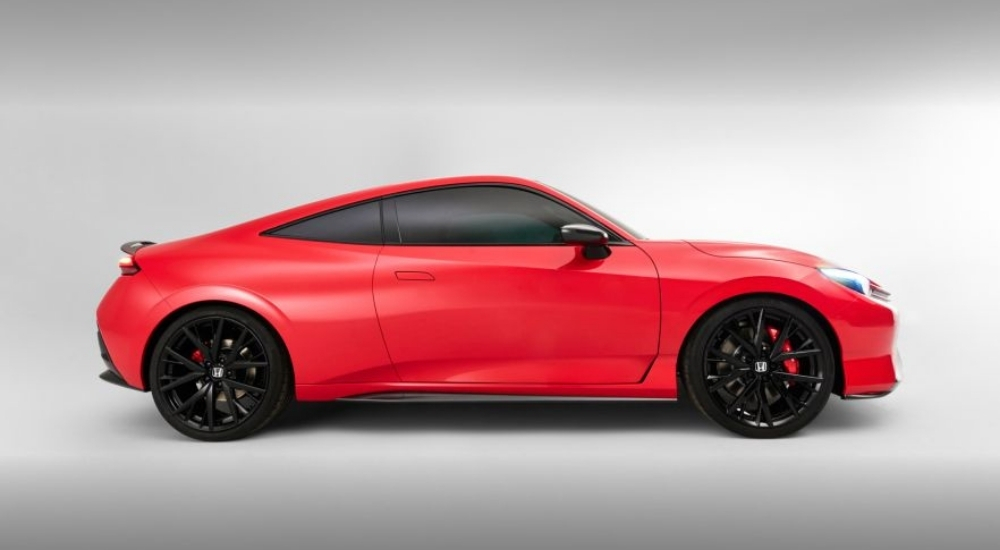Oh, the Honda Prelude, the sleeker and better-looking Honda Accord, a car made for the sole purpose of picking up dates—I’m not kidding; Honda said it themselves. Back in the day, in the year 2000, the Prelude was a relatively tame vehicle that combined front-wheel drive with a modest-revving 220 hp inline-four under the hood. Still, it had an available manual transmission and weighed under 3,000 lbs.
That’s all well and good for a sporty compact, but what set the Prelude apart from other cars in its class was an exterior that would make you think it was a fire-breathing monster more akin to a Nissan GT-R or a Mazda RX-7. It had a low roofline and a long sweeping hood that would have you swear it was a rear-wheel drive layout, when what sat underneath those sleek bodylines shared many of its parts with the Honda Accord. It was a car designed from the ground up to look more impressive than it was; that’s not to say it wasn’t a gem, it just happened to look like a diamond despite being a white sapphire.
When Honda announced that it was bringing back the Prelude, the lack of initial details made enthusiasts cautiously optimistic despite some questionable wording. Today Honda has revealed most of the specs for the upcoming Prelude and things are not exactly looking like this is going to be the triumphant return of the Accord’s cooler brother that it first looked like it was going to be; instead, it’s now based on the Civic and is more like that weird cousin who shames you for eating meat and thinks that loud exhausts should be illegal. Alright, enough of me sounding like a melodramatic teenager whose favorite emo band released an album with a new vocalist, let’s get into what makes the new Prelude such a confusing letdown.
Goodbye Stick-Shift, Hello “Engaging Shift Simulation”
Gone are the days of having to begrudgingly shift your own gears; you Honda enthusiasts just hate that, right? Honda has graced us all with the ease of the new S+ shift system. The Prelude uses its speakers and variable power output to simulate shifting gears without the hassle of actually rowing your own gears, all to the sonorous soundtrack of what seems to be an autotuned fart. It can even simulate a “rev matched downshift”—whatever Honda considers that to be—despite there being no actual gear ratios or really any connection between the engine and wheels whatsoever. Honda’s hybrid system is a bit of a strange beast. To put it simply, the engine is primarily there to power a pair of electric motors attached to the front wheels, so there is no mechanical reason for the car to be shifting at all—it’s a very similar idea to the Hyundai IONIQ 5 N’s simulated gears.
At Least It’s Fast, Right?… Right?
When it comes to electrifying beloved enthusiast classics, the counterpoint to the naysayers is usually that the electric powertrain makes the vehicle far quicker than its gasoline predecessor. Originally, this sentiment was at least somewhat fortified due to the fact that when Honda first showed off the Prelude concept, it was sporting large Brembo brakes from the Civic Type R. There’s no way that Honda would put that much stopping power on a car if it didn’t have the power to back it up…right?
I suppose if you consider a combined output of 200 hp enough to back it up, then sure. Honda gave the Prelude the same powertrain as the Honda Civic Hybrid, which is not exactly the sportiest powertrain option you could think of. Confusingly, the production version maintains the Brembos of the prototype, alongside some other suspension components shared with the Civic Type R, despite its meager power output. So, at the very least, after the arduously slow acceleration, you can quickly stop the vehicle to get out of the Prelude and into a more entertaining enthusiast vehicle.
If You’ve Got Nothing Nice to Say…
Despite everything I’ve said so far, the Prelude could still be at least a mild hit if it were two things: cheap and lightweight. A coupe with 200 hp and 232 lb-ft of torque would still be pretty fun if the car is light enough to get out of its own way, and the lack of a manual transmission wouldn’t be as big a deal if it’s affordable to younger enthusiasts who are less likely to want a manual.
Well, as it turns out, Honda left two pretty key details out of the press release that don’t exactly bode well for the Prelude: the weight and the price. At 178.4 inches long, the Prelude is 10.5 inches longer than the Toyota GR86, so I wouldn’t bet on it being light enough to make that 200 hp fun. When it comes to pricing, Honda has said that the Prelude will come to dealers in one “very well-equipped” trim late this fall. I don’t expect the Prelude to be anything resembling affordable, considering all the Civic Type R hardware it will be sporting, and the high pricing of the Japanese-market model supports this.
Redefining the Date Car
So, what could Honda have been thinking when it came up with the new Prelude? Well, as it turns out, they told us in a Japanese press release. The new Prelude is designed to be the “date car reimagined”—so what does that mean? The original Prelude was designed to be sleek and give the impression of a high-end performance car, making it the perfect car to pick up a date in, hence the moniker. To redefine the “date car,” Honda started out by redefining what a “date” was.
According to Honda, “dates aren’t limited to lovers, but could also include couples, parents and children, grandparents and grandchildren, siblings, best friends, and even the relationship between ‘you and your car.'” So the new Prelude is a car that you can…drive places…with people you know…or alone. We can conclude that when Honda set out to make the new Prelude, it set out to make…a car. All things considered, as an enthusiast, you may want to look at some of the other options that fulfill the same purpose of being a coupe while also setting out to be an actual performance vehicle, the Toyobaru twins, for example, or perhaps a used Civic Si coupe?






